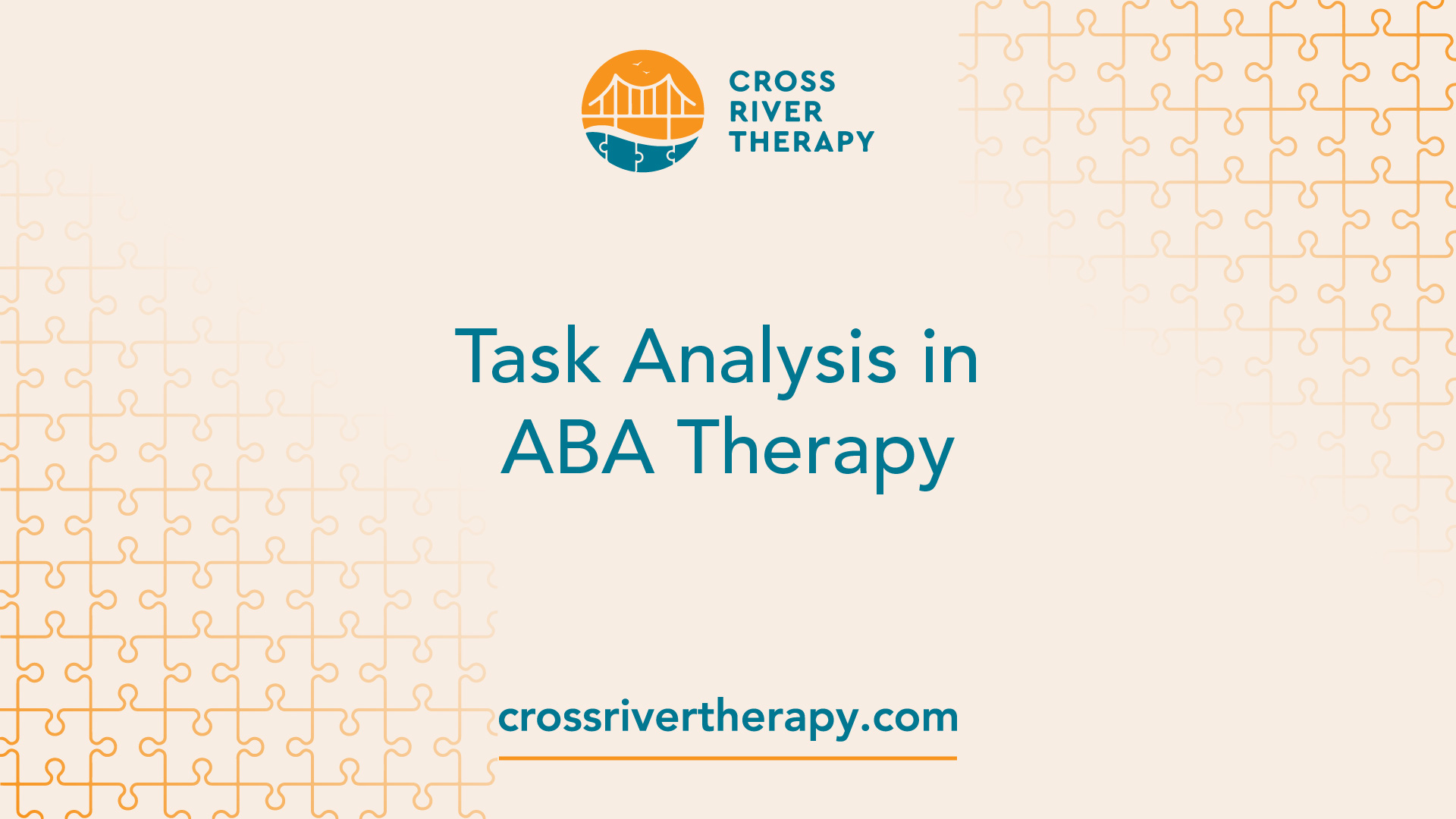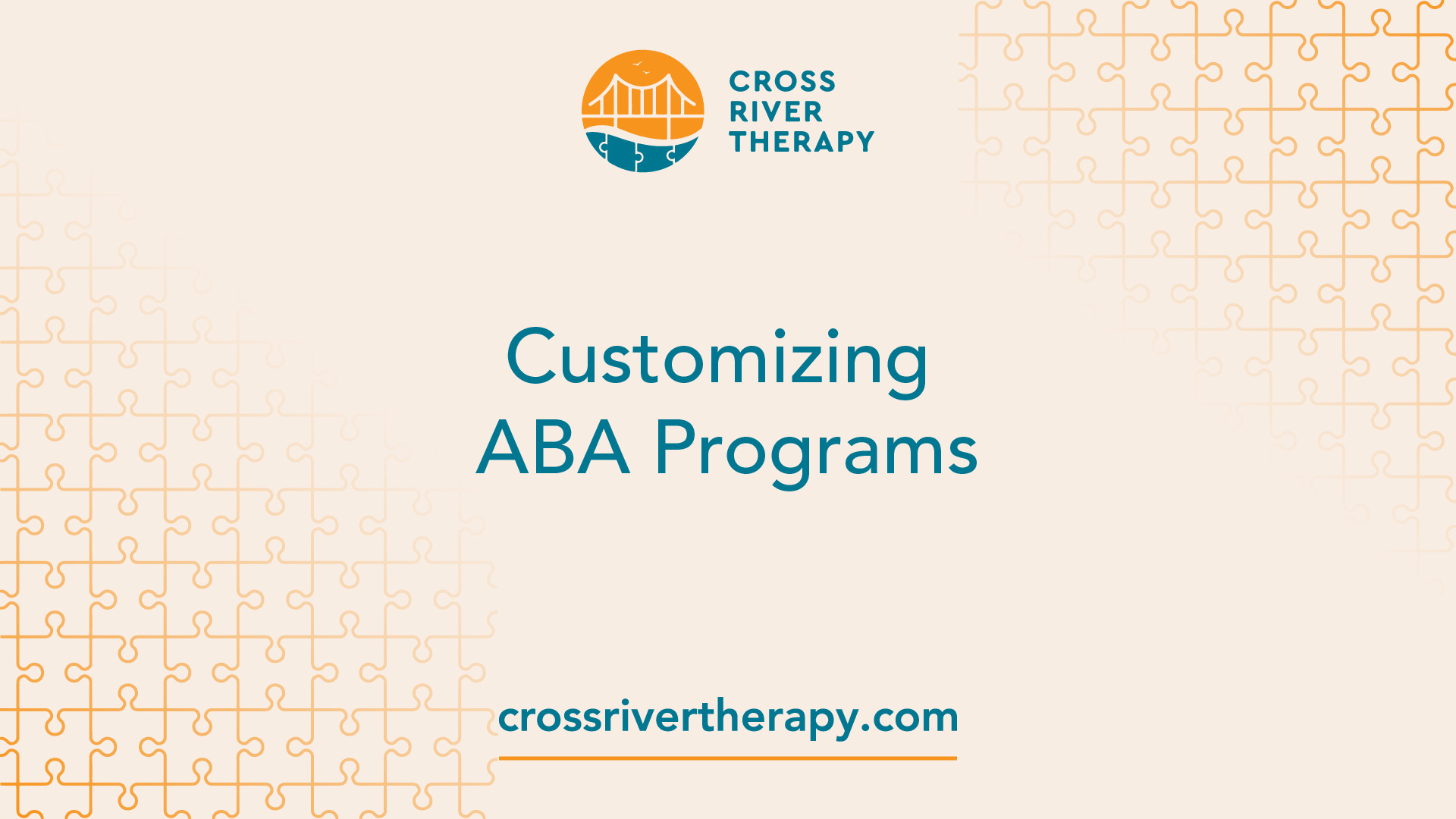How Does ABA Therapy Utilize Task Analysis?
Unlock the power of ABA therapy for task analysis! Discover how it supports children with autism and empowers families.

ABA Therapy Basics
When it comes to ABA therapy, understanding the basics is essential for parents seeking effective interventions for their children diagnosed with autism. ABA, or Applied Behavior Analysis, is a therapeutic approach that aims to improve socially significant behaviors by applying principles of learning and behavior.
Understanding ABA Therapy
ABA therapy is rooted in the belief that behavior is learned and can be modified through systematic interventions. It focuses on breaking down complex behaviors into smaller, more manageable components, making it easier for individuals to learn and acquire new skills. ABA therapy utilizes evidence-based techniques and strategies to teach individuals with autism the skills they need to lead more independent and fulfilling lives.
One key aspect of ABA therapy is the use of task analysis. Task analysis involves breaking down complex tasks into smaller, sequential steps, allowing individuals to focus on one component at a time. By systematically teaching these smaller steps, ABA therapy provides individuals with the tools they need to successfully learn and master new skills.
Benefits of ABA Therapy
ABA therapy offers several benefits for individuals with autism and their families. Through its systematic and individualized approach, ABA therapy can:
- Improve communication skills: ABA therapy targets communication deficits commonly associated with autism, helping individuals develop effective communication skills, whether through verbal or nonverbal means.
- Enhance social interaction: ABA therapy focuses on improving social skills, such as initiating and maintaining conversations, understanding social cues, and engaging in reciprocal interactions with others.
- Promote independence: ABA therapy helps individuals acquire essential life skills, including self-care, daily living tasks, and functional routines, fostering independence and increasing overall quality of life.
- Reduce challenging behaviors: ABA therapy addresses challenging behaviors by identifying their underlying functions and implementing strategies to replace them with more appropriate behaviors.
- Enhance academic performance: ABA therapy can be tailored to target academic skills, such as reading, writing, math, and problem-solving, ensuring that individuals with autism receive comprehensive educational support.
By utilizing task analysis and other evidence-based techniques, ABA therapy provides targeted interventions tailored to the unique needs of each individual. This individualized approach allows for the effective acquisition and development of skills, leading to meaningful and lasting improvements in daily functioning.
As parents explore ABA therapy as an intervention for their child, it's important to work closely with qualified professionals who specialize in ABA therapy for autism. These professionals can assess the specific needs of the child and design a comprehensive ABA program that aligns with their goals and maximizes their potential for growth and development.
Task Analysis in ABA Therapy

In the realm of ABA therapy, task analysis plays a pivotal role in helping individuals with Autism Spectrum Disorder (ASD) learn and acquire new skills. Task analysis involves breaking down complex tasks into smaller, sequential steps, allowing individuals to learn and master new skills more effectively. This systematic approach helps therapists create customized teaching programs tailored to the abilities and learning styles of individuals receiving therapy.
Importance of Task Analysis
Task analysis is a fundamental component of ABA therapy, enabling therapists and practitioners to better understand the specific steps required to complete a skill or task. By breaking down skills into smaller, more manageable steps, individuals with ASD can focus on one component at a time, reducing overwhelm and promoting successful learning experiences. Task analysis provides a structured and organized teaching method that is particularly beneficial for individuals with ASD, who often thrive with clear and concise instruction.
The benefits of task analysis in ABA therapy include:
- Promoting Independence: Breaking down tasks into smaller steps allows individuals to learn and master each step independently. As they progress through the steps, they gain confidence and independence in completing the task.
- Reducing Overwhelm: Individuals with ASD may struggle with processing and organizing information. Task analysis helps to simplify complex tasks, reducing overwhelm and allowing individuals to focus on one step at a time.
- Facilitating Skill Acquisition: By providing a clear and structured roadmap, task analysis facilitates the acquisition of new skills. It ensures that individuals understand and can perform each step before moving on to the next, promoting a solid foundation for skill development.
Implementing Task Analysis Techniques
In ABA therapy, there are several techniques for implementing task analysis effectively. Here are a few common approaches:
- Forward Chaining: This technique involves teaching the first step of a task and gradually adding subsequent steps until the entire task is mastered. For example, when teaching toothbrushing, the therapist may initially assist with squeezing toothpaste onto the toothbrush. Once the individual has mastered this step, they move on to the next step, such as wetting the toothbrush, and so on.
- Backward Chaining: In contrast to forward chaining, backward chaining involves starting with the last step of a task and working backward. The therapist initially completes all the steps except the last one, allowing the individual to practice and master the final step independently. As each step is mastered, the individual gradually takes on more responsibility until they can complete the entire task.
- Total Task Presentation: With this approach, the therapist presents the entire task to the individual and provides support as needed. The level of support gradually decreases over time as the individual gains mastery. This technique is particularly useful for tasks that are already partially mastered or for individuals who benefit from a more comprehensive view of the task.
By selecting the appropriate task analysis technique, therapists and practitioners can tailor their teaching methods to the unique needs and learning styles of individuals with ASD. The goal is to provide effective instruction that maximizes learning and skill acquisition.
Task analysis is just one aspect of the comprehensive strategies utilized in ABA therapy. Other techniques, such as positive reinforcement and chaining procedures, work in conjunction with task analysis to promote skill development and progress. To learn more about these strategies, refer to our articles on positive reinforcement and chaining procedures.
Strategies in ABA Therapy
When it comes to ABA therapy, there are various strategies employed to effectively address the needs of individuals with autism. Two key strategies used in ABA therapy are positive reinforcement and chaining procedures.
Positive Reinforcement
Positive reinforcement plays a crucial role in ABA therapy, as it encourages positive behavior change by rewarding desired behaviors with meaningful incentives. By providing a desired consequence after a student engages in a desired behavior, positive reinforcement increases the likelihood of the behavior occurring in the future.
In ABA therapy, positive reinforcement can take various forms, such as verbal praise, access to preferred toys or activities, tokens, or other tangible rewards. The specific reinforcement used depends on the individual's preferences and motivations. By consistently and immediately providing positive reinforcement following the desired behavior, individuals with autism are motivated to continue engaging in those behaviors.
Chaining Procedures
Chaining procedures are an essential component of ABA therapy as they are used to teach tasks identified through task analysis. Chaining allows individuals to learn complex behaviors or tasks by breaking them down into smaller, more manageable steps.
There are different types of chaining procedures used in ABA therapy, including forward chaining, backward chaining, and total task teaching. Each strategy offers its own benefits and can be chosen based on individual needs and learning styles.
- Forward Chaining: In forward chaining, the learner is taught to complete the initial steps of a task independently, while the remaining steps are still completed with guidance. Over time, independence is gradually increased as the learner masters each step of the task.
- Backward Chaining: In backward chaining, the instructor completes all steps of the task except for the last one, which is performed by the learner. As the learner becomes proficient in the final step, the instructor gradually fades support in the preceding steps until the learner can independently complete the entire task.
- Total Task Teaching: Total task teaching involves teaching all steps of a task simultaneously. The instructor provides guidance and prompts as needed throughout the entire task until the learner can independently complete it.
Chaining procedures help individuals with autism learn the logical sequence of tasks, understand the benefit of task completion, and eventually develop independence in completing the mastered steps. By breaking down tasks into smaller, achievable components, individuals can gradually build their skills and confidence.
By utilizing positive reinforcement and chaining procedures, ABA therapists can effectively teach and reinforce desired behaviors in individuals with autism. These strategies, along with other techniques used in ABA therapy, contribute to the overall success and progress of individuals receiving ABA intervention.
Customizing ABA Programs

In the field of Applied Behavior Analysis (ABA) therapy, customization is key to providing effective treatment to individuals with autism. By tailoring programs to meet the unique needs of each individual and designing individualized instruction, therapists can maximize learning potential and facilitate skill development.
Tailoring Programs to Individuals
One of the fundamental aspects of ABA therapy is the customization of programs to meet the specific requirements of each individual. This involves conducting thorough assessments to identify the strengths, weaknesses, and learning styles of the individual. By understanding these factors, ABA therapists can create targeted interventions that address the specific needs of the individual.
Task analysis plays a significant role in tailoring ABA programs. It involves breaking down complex skills into smaller, sequential steps, allowing individuals to learn and master new skills more effectively. This systematic approach helps therapists create customized teaching programs tailored to the abilities and learning styles of individuals receiving therapy.
ABA therapists use task analysis to teach a wide range of skills, including daily living skills, communication and language skills, academic skills, and social skills. By customizing teaching programs to the unique needs of each learner, therapists can facilitate the learning process and help individuals progress towards their goals [5]. This individualized approach ensures that therapy sessions are focused, relevant, and tailored to the strengths and challenges of the individual.
Designing Individualized Instruction
Individualized instruction is a crucial component of ABA therapy. It involves adapting teaching methods, materials, and strategies to the specific needs and learning styles of the individual. By doing so, therapists can optimize learning opportunities and promote skill acquisition.
In designing individualized instruction, ABA therapists consider various factors such as the individual's cognitive abilities, sensory preferences, and motivation. They may incorporate visual supports like written instructions, pictures, or visual schedules to reinforce understanding and promote independence during the learning process.
The use of visual supports can aid in breaking down complex tasks into manageable steps. Sequencing the steps logically and providing visual cues can help individuals follow the task analysis effectively. These visual supports serve as reminders and prompts, reducing errors and fostering independence.
By customizing ABA programs and designing individualized instruction, therapists can enhance the learning experience for individuals with autism. This personalized approach ensures that therapy targets the specific needs of each individual, promoting progress and skill development. Through ongoing assessment and adjustments to the program, therapists can continually refine and adapt the instruction to maximize the individual's learning potential.
ABA Therapy Effectiveness
When it comes to addressing the needs of children with autism, ABA therapy has emerged as one of the most effective and evidence-based approaches. Extensive research has demonstrated the positive impact of ABA therapy on the development and well-being of individuals with autism spectrum disorders (ASD).
Research Findings on ABA Therapy
Over the last 40 years, research has consistently shown that interventions based on ABA are effective in increasing desired behaviors and skills while decreasing undesired behaviors in children with autism. ABA therapy utilizes reinforcement and punishment as behavioral principles to address socially important behaviors, making it a widely recognized and evidenced-based approach.
A study examining the impact of ABA-based interventions on children with ASD found significant long-term benefits for their overall development. These interventions led to positive effects in intellectual functioning, language development, acquisition of daily living skills, and social functioning in children with ASD [7]. These findings highlight the comprehensive nature of ABA therapy and its ability to address various aspects of a child's development.
Another comprehensive study assessed the impact of ABA therapy on children and youth with ASD across multiple outcome measures. The study found improvements in cognitive abilities, language development, social/communication skills, adaptive behavior, emotional well-being, and autism symptoms. The results demonstrated the wide-ranging positive effects that ABA therapy can have on individuals with autism.
Long-Term Impact of ABA Therapy
The positive effects of ABA therapy can extend beyond the immediate intervention period. Researchers have observed that children who received ABA-based interventions showed long-term improvements in various areas of functioning. For example, the UCLA Young Autism Project revealed that a significant percentage of children who participated in ABA treatment reached normal intellectual and educational functioning [8]. This underscores the transformative potential of ABA therapy in promoting long-term positive outcomes for individuals with autism.
By providing individualized and targeted interventions, ABA therapy empowers children with ASD to develop essential skills, improve their communication abilities, enhance social interactions, and gain independence in daily living. The effectiveness of ABA therapy has been widely recognized and has contributed to its widespread adoption as a primary intervention for individuals with autism.
It's important to note that the effectiveness of ABA therapy may vary depending on the individual and the specific program implemented. Customizing ABA programs to meet the unique needs of each individual is a crucial aspect of maximizing the therapy's effectiveness. Additionally, active involvement and support from families play a vital role in ensuring the long-term success of ABA therapy [9]. By working together, therapists, families, and individuals with autism can make significant strides in promoting positive outcomes and improving the quality of life for those on the autism spectrum.
Supporting Children with ASD
When it comes to ABA therapy for children with Autism Spectrum Disorder (ASD), it's essential to recognize the importance of family involvement in the treatment process. Alongside professional therapists, parents play a crucial role in supporting their child's progress and generalizing skills learned in therapy to everyday life.
Family Involvement in ABA Therapy
Family involvement is a key component of successful ABA therapy. Parents are encouraged to actively participate in their child's therapy sessions, as this helps them understand the techniques and strategies being used. By observing and learning from the therapists, parents can reinforce the skills taught during therapy sessions and promote consistency in their child's learning environment.
In addition to participating in therapy sessions, parents can also collaborate with therapists to set goals and establish effective strategies for their child's development. Open communication and regular meetings allow parents to provide valuable insights into their child's strengths, challenges, and interests. This partnership between parents and therapists helps ensure that the child's individual needs are met and that therapy aligns with the family's goals.
Addressing Daily Living Skills
ABA therapy not only focuses on teaching specific skills but also addresses daily living skills that are essential for a child's independence and overall well-being. These skills include self-care tasks such as brushing teeth, getting dressed, eating, and personal hygiene.
Therapists work with children to break down these daily living skills into smaller, manageable steps using task analysis, a fundamental component of ABA therapy. By breaking down complex tasks into sequential steps, therapists can teach children the necessary skills in a systematic and structured manner, promoting successful learning experiences.
Parents can support the development of daily living skills by incorporating these tasks into their child's daily routine and providing opportunities for practice. Consistency and repetition are key in helping children generalize these skills and become more independent in their daily lives.
By actively engaging in their child's therapy and supporting the generalization of skills to daily life, parents play a vital role in the success of ABA therapy. The collaboration between therapists and parents creates a cohesive and comprehensive approach that maximizes the child's learning potential and promotes their overall development.
References
[1]: https://www.adinaaba.com/post/task-analysis-in-aba-therapy
[2]: https://iris.peabody.vanderbilt.edu/module/asd2/cresource/q1/p03/
[3]: https://www.autismspeaks.org/applied-behavior-analysis
[4]: https://www.iidc.indiana.edu/irca/articles/applied-behavior-analysis.html
[5]: https://www.brighterstridesaba.com/blog/task-analysis-in-aba-therapy
[6]: https://www.abtaba.com/blog/task-analysis-in-aba
[7]: https://www.ncbi.nlm.nih.gov/pmc/articles/PMC7265021/



